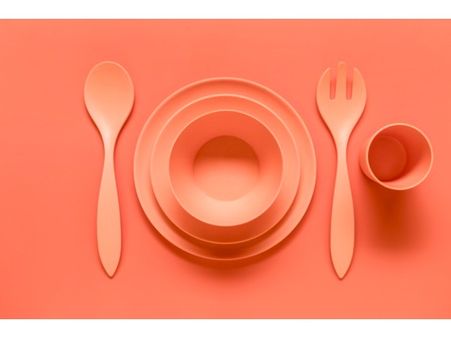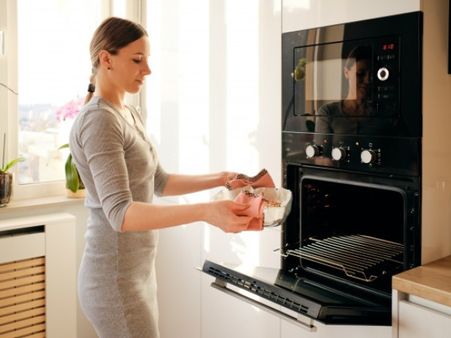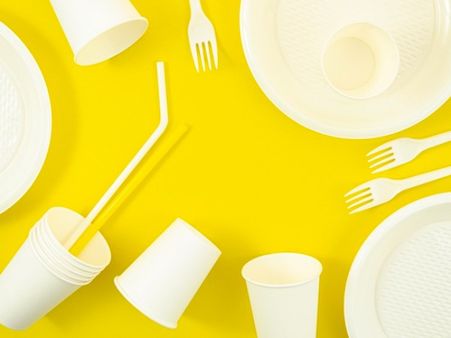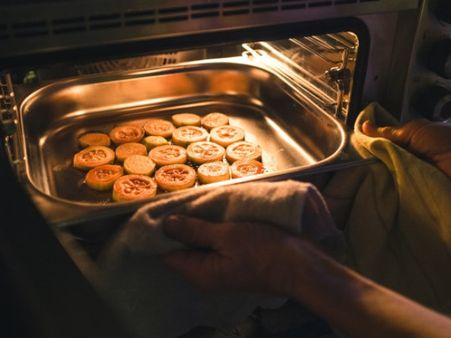Just In
- 27 min ago

- 1 hr ago

- 6 hrs ago

- 9 hrs ago

Don't Miss
- Sports
 Who Won Yesterday's IPL Match 33? PBKS vs MI, IPL 2024 on April 17: Mumbai Indians Escape Last-Ditched Fight by Punjab Kings To Win
Who Won Yesterday's IPL Match 33? PBKS vs MI, IPL 2024 on April 17: Mumbai Indians Escape Last-Ditched Fight by Punjab Kings To Win - Movies
 Do Aur Do Pyaar OTT Release Date & Platform: When & Where To Watch Vidya Balan’s Film After Theatrical Run?
Do Aur Do Pyaar OTT Release Date & Platform: When & Where To Watch Vidya Balan’s Film After Theatrical Run? - Finance
 Wipro Q4 Results Preview: Weak Demand Likely To Drag Revenue Sequentially, EBIT Margins Seen Stable
Wipro Q4 Results Preview: Weak Demand Likely To Drag Revenue Sequentially, EBIT Margins Seen Stable - News
 BRS Chief K Chandrasekhar Rao Slams BJP, Says K Kavitha's Arrest Is Vendetta Politics
BRS Chief K Chandrasekhar Rao Slams BJP, Says K Kavitha's Arrest Is Vendetta Politics - Automobiles
 Aprilia RS 457 Accessories: A Detailed Look At The Prices
Aprilia RS 457 Accessories: A Detailed Look At The Prices - Education
 Karnataka SSLC Result 2024 Soon, Know How to Check Through Website, SMS and Digilocker
Karnataka SSLC Result 2024 Soon, Know How to Check Through Website, SMS and Digilocker - Technology
 Nothing Ear, Ear a With ANC, Up to 42.5 Hours of Battery Launched; Check Price and Availability
Nothing Ear, Ear a With ANC, Up to 42.5 Hours of Battery Launched; Check Price and Availability - Travel
Telangana's Waterfall: A Serene Escape Into Nature's Marvels
Is It Safe To Use Plastic Containers In Microwave?
Plastic is ubiquitous in today's world. We eat in plastic plates, drink in plastic bottles, or even carry our food in it. Although it has 'seemingly' made life easier for the fast-paced life, plastic is a colossal problem disrupting the existence of life on this planet. That is, the contamination caused by plastic has reached epidemic levels.

Plastic has become an inevitable part of our life, and not in the slightest expedient aspect. So, today we will look into a common question - Is It Safe To Use Plastic Containers In Microwave?

Plastic Containers Contain Toxic Chemicals
First things first, when a bowl or plate is labelled ‘microwave-safe,' it does not mean that you are safe from the chemicals. Mostly, the label means they won't melt or break when heated and not that you are safe from the chemicals.

According to research, BPA (bisphenol A, an industrial chemical that has been used to make certain plastics and resins) found in food packaging, such as plastic containers, can cause serious concern for the planet earth [1]. Agreed, it is more convenient to store, eat or carry water in plastic and it is also completely unavoidable at times, but is it also making us unhealthy?
Most plastics are made of long chains of hydrocarbon molecules and most plastics have added chemicals used for improving the flexibility or even colour of the bottles, such as bisphenol-A (BPA), added to make clear, hard plastic and phthalates, added to make plastic soft and flexible [2].
The safety of plastic containers varies depending on the type of plastics that are used [3]. Most of us are aware that plastic and microwaves are not a good match, still, we drop that plastic bowl into the microwave to heat up some food quickly.

What Happens When You Microwave Food In Plastic Bowls?
When food is placed or wrapped in a plastic container and microwaved, BPA and phthalates may leak into the food and can pose various health risks [4]. The two components in plastics, phthalates and bisphenol-A (BPA) are often referred to as endocrine disruptors - as they can affect estrogen and testosterone levels in humans [5].

On being microwaved, these toxins are released from the plastic bowls and get mixed with the food. The endocrine disruptors can be especially dangerous to children, disrupting normal growth and development [6]. The migration of toxic chemicals is more in the case of fatty foods such as meats and cheeses than with other foods [7].
Several studies had pointed out that foods that are just packed in plastic containers or wrappers have plastic content in them, even at normal room temperature [8]. Therefore, the migration of toxic chemicals from plastic containers into the food while being microwaved is no new news.

In addition, WHO points out that food baked in a microwave is safe for consumption when it is done in a glass-ceramic ware or heatproof glassware.

How Harmful Are The Chemicals In Plastic Bowls?
Several chemicals in the plastic bowls can leach into your food when you heat it and cause hormonal problems [9].
- The endocrine-disrupting toxins can also impact the development of the brain and reproductive organs in developing foetuses [10].
- Exposure to phthalates has been associated with reduced sperm quality in men [11].
- Phthalates are also linked to causing future reproductive and fertility issues in women.
- Exposure to BPA can lead to prematurity in foetuses, changes in breast and prostate cells, early puberty, obesity, diabetes, and heart disease [12].
- Children are more vulnerable to the toxins due to their rapid breathing pattern, increasing their risk of developing respiratory problems [13].
- Once it is in the bloodstream, it may induce cancer and can affect the immune system and nervous system.
- The minute particles in the toxins from the plastic can pass into the bloodstream and cause cardiovascular or cerebrovascular diseases [14].


How To Prevent/Limit The Exposure To Chemicals?
Until and unless plastic bowls that are safe for microwaving (without seeping the toxins into the food) are invented, it is best to avoid the use considering the number of severe health risks it poses. Apart from the momentary convenience, plastic is nothing but a bane to us and the world we live in.
In order to limit your exposure to chemicals in food, consider the following steps [15][16]:
- Use glass or ceramic containers labelled for use in microwave ovens.
- Most takeout containers, water bottles and plastic jars are not microwave-safe and should be discarded consciously.
- Old and cracked containers or those that have been microwaved many times may leach out toxins.
- If food must be covered, then use a paper towel, not plastic wrap.
- Store your food in glass or stainless steel.
- Avoid plastics with recycling codes 3 (which means it contains phthalates), 6 (styrene), and 7 (bisphenols).
- Switch to biodegradable products.
- Reduce buying processed foods and foods covered in plastic.
- Say bye-bye to bottled water.
- Boil the water at your home and carry it in a water bottle, which is not plastic.
- Avoid using plastic straws.
- Research about the alternatives that could be used in place of plastic.
- Use cloth bags or reusable paper bags [18].
- Use clothes that are eco-friendly and non-synthetic.

In addition to avoiding the use of plastic for storing your food, you can limit and eventually stop the use of plastic and plastic products altogether. Not only is it highly beneficial for you and your family's health, but it is also critical for the environment [17].

On A Final Note…
To answer the question raised - No, it is not safe to microwave foods in plastic containers. Even if they are ‘microwave-safe,' the chemicals can seep into the food and cause health problems. For heating up food, use glass-ceramic ware and heatproof glassware. You can also use paper products that are specifically approved for microwave cooking.
-
 healthUsing Plastic Cutting Boards: How Safe Is It? Which Is Safer Wood Or Plastic Cutting Boards?
healthUsing Plastic Cutting Boards: How Safe Is It? Which Is Safer Wood Or Plastic Cutting Boards? -
 insyncInternational Plastic Bag Free Day 2023: Is ‘Manjappai' Cloth Bag An Apt Alternative For Plastic Bags?
insyncInternational Plastic Bag Free Day 2023: Is ‘Manjappai' Cloth Bag An Apt Alternative For Plastic Bags? -
 healthTypes Of Eco-Friendly Food Packaging And What To Avoid
healthTypes Of Eco-Friendly Food Packaging And What To Avoid -
 insyncAustralian Scientists Discover Superworms That Digest Styrofoam, Offering Hope For Plastic Waste Management
insyncAustralian Scientists Discover Superworms That Digest Styrofoam, Offering Hope For Plastic Waste Management -
 wellnessPlastic Ban From 1 July: 14 Eco-Friendly Alternatives For Everyday Plastics
wellnessPlastic Ban From 1 July: 14 Eco-Friendly Alternatives For Everyday Plastics -
 basicsHarmful Effects Of Plastic Containers And Heat-Inducing Foods During Pregnancy
basicsHarmful Effects Of Plastic Containers And Heat-Inducing Foods During Pregnancy -
 wellnessDetoxing Your Home: Understanding And Eliminating Environmental Toxins
wellnessDetoxing Your Home: Understanding And Eliminating Environmental Toxins -
 wellnessThis Is Why You Should Avoid Using Plastic Containers!
wellnessThis Is Why You Should Avoid Using Plastic Containers! -
 wellnessThese Eco-friendly Alternatives To Plastic Items Can Protect Your Health
wellnessThese Eco-friendly Alternatives To Plastic Items Can Protect Your Health -
 wellnessThese Things That You Use Every Day Can Harm Your Health In The Long Run
wellnessThese Things That You Use Every Day Can Harm Your Health In The Long Run -
 nutritionBeware Of Plastic Rice: How To Identify Plastic Rice
nutritionBeware Of Plastic Rice: How To Identify Plastic Rice -
 wellnessThis Common Plastic Chemical Increase Breast Cancer Risk
wellnessThis Common Plastic Chemical Increase Breast Cancer Risk


 Click it and Unblock the Notifications
Click it and Unblock the Notifications



